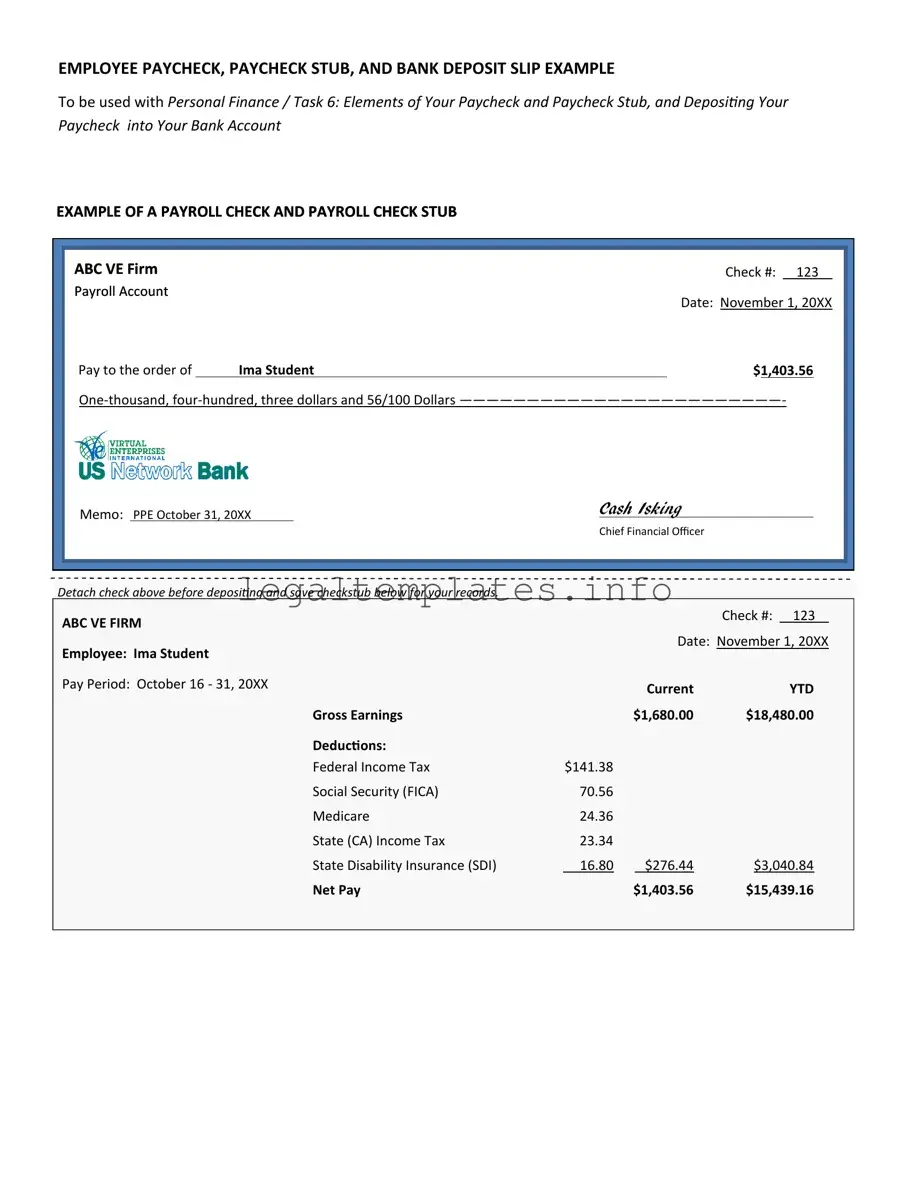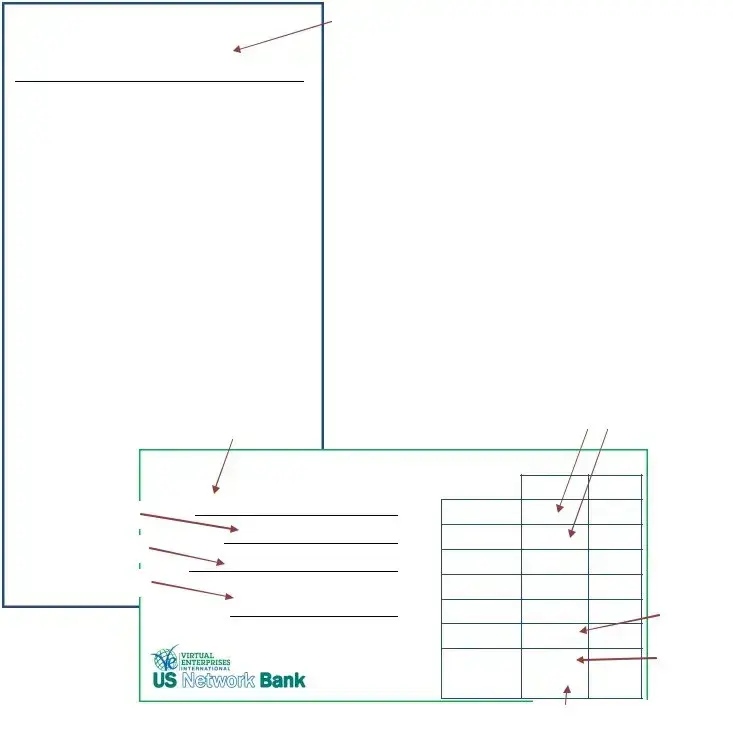The Payroll Check form shares similarities with the Direct Deposit Authorization form, primarily because both documents are pivotal in the process of managing employee salaries. The Direct Deposit Authorization form, like the Payroll Check, collects crucial banking details but serves to facilitate the electronic transfer of funds directly into an employee's bank account, rather than via a physical check. This method represents a modern alternative to the traditional paper-based system, highlighting both documents' roles in ensuring employees receive their earnings efficiently.
Another document similar to the Payroll Check form is the W-4 form, issued by the IRS. The W-4 form is essential for determining the amount of federal income tax to withhold from an employee's paycheck, directly affecting the net amount an employee receives. Both forms are integral at the commencement of employment, ensuring appropriate handling of an employee's compensation and tax obligations.
The Timesheet is also closely related to the Payroll Check form. Timesheets record the hours an employee works, which directly informs the amount written on a Payroll Check for those on hourly wages. This document underpins the accuracy of the Payroll Check, ensuring that employees are compensated precisely for their time worked.
Similar to the Payroll Check form is the Employee Expense Reimbursement form, which details expenses an employee has incurred on behalf of the company that are to be paid back. Although the reimbursement process differs, both documents involve financial transactions between the employer and the employee, ensuring that the latter is adequately compensated, either for labor or for expenses incurred.
The Pay Rate Change form is another document bearing resemblance to the Payroll Check form. It documents any adjustments in an employee's salary or hourly wage, impacting the amount on subsequent Payroll Checks. Both forms are critical for maintaining transparency and accuracy in employee compensation.
The Annual Salary Increase Letter, while more of a formal communication than a form, is connected to the Payroll Check in its effect on an employee's earnings. It specifies the amount and effective date of a salary increase, directly influencing the figures on future Payroll Checks, thereby ensuring that employees are aware of changes to their compensation.
The Bonus Pay Form is akin to the Payroll Check form as it outlines specific additional amounts to be paid to an employee, beyond the regular salary or wage. This form serves the purpose of recognizing and rewarding employees for their performance, influencing the total amount they receive during the payout period.
The 1099-MISC form, while primarily used for freelancers and contractors, parallels the Payroll Check form in its purpose to report an individual's earnings. However, unlike regular employees receiving a Payroll Check, contractors receive payments summarized annually on the 1099-MISC, highlighting differences in payment processing and tax obligations between employee types.
The Unemployment Claim Form, though distinct in context, shares a connection with the Payroll Check form as it pertains to an individual's earnings history. Unemployment benefits, determined based on previous earnings verified by such documents as Payroll Checks, ensure financial support during periods of unemployment.
Lastly, the Benefits Enrollment form echoes the Payroll Check form's role in an employee’s financial management, detailing selections for health insurance, retirement plans, and other benefits that may affect the net amount on a Payroll Check. By choosing certain deductions or contributions, employees indirectly shape the final sum they receive, illustrating how various forms interact within the broader compensation framework.


